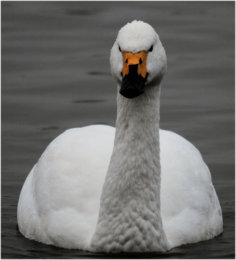X-rays reveal shooting of swans despite legislation
A forty year study by the Wildfowl & Wetlands Trust (WWT) reveals that Bewick’s swans are being shot, despite being protected by law in every country they fly through.
23% of live Bewick’s swans x-rayed for the study since 2000 had been shot.
The swans, currently on their spring migration from the UK to Arctic Russia, have been in sharp decline since the mid-1990s and conservationists at WWT are trying to eliminate threats to their future.
These findings reflect potential shooting along the swans’ entire migration path, but it is not yet possible to say where shooting hotspots might be.
The swans are regular and much-loved winter visitors to Slimbridge on the River Severn and the Ouse Washes in Norfolk, where researchers catch a proportion each year for ringing and health screening.
In addition, they x-ray the birds, revealing which ones are living with shotgun pellets lodged in their bodies. This gives a clear indication of the amount of illegal shooting that goes on.
A paper published in 1973, the early days of the study, found 34% of Bewick’s swans to be living with shot in them.
Now, forty years into the study, WWT has discovered that 23% of Bewick’s swans still continue to be shot.
Julia Newth, Wildlife Health Research Officer at WWT, says: “We are doing our best to work out what is behind the decline of our swans. There are a number of suspected threats. Irrespective of the importance of illegal shooting among these, we need to reduce mortality from all factors in this declining species.
“We face a big challenge because the swans migrate across all of northern Europe to reach their breeding grounds in Russia, which is a vast area within which to try to work out why people continue to shoot the swans.
“We want to appeal to responsible hunters to keep their eyes out and to report anyone they see shooting at swans.
“If we can work out where the shooting hotspots are, we can do something to address the illegal shooting of swans.”
Most shot birds had between one and three pellets in them, but one swan caught at Slimbridge in 1991 had 30 pellets in it.
With such high levels of wounding, it follows that many birds are probably killed by shooting.
Other studies looking at geese and ducks carrying pellets report that wounded birds can have a much lower chance of survival.
WWT is a leading member of an international, multi-disciplinary, team which is investigating why Bewick’s swans are declining in Europe and the threats faced by the birds, including disturbance, habitat loss, changes in the climate, collisions with large objects such as power lines and wind turbines, and lead poisoning.
WWT’s swan records are a valuable tool for the team because they are the world’s longest and most comprehensive study of Bewick’s swan return dates, migration and family histories.
The records were started during the winter of 1964/65 by WWT founder Sir Peter Scott soon after he realised that the bill markings of Bewick’s swans are as unique as a fingerprint is to a person, so could be used to identify individuals.
Today, Sir Peter’s pioneering ID system means that WWT experts can recognise many hundreds of birds by name and ancestry.
Bewick’s swans are named after the bird-watcher and illustrator, Thomas Bewick (1753 to 1828) and are thought to have inspired the Russian folk story on which the ballet Swan Lake is based.
.


